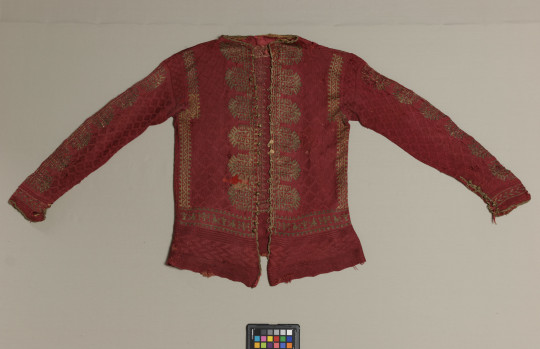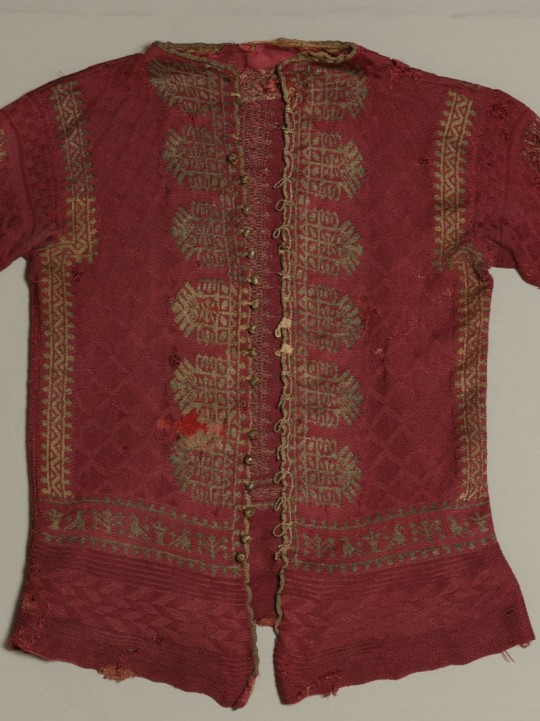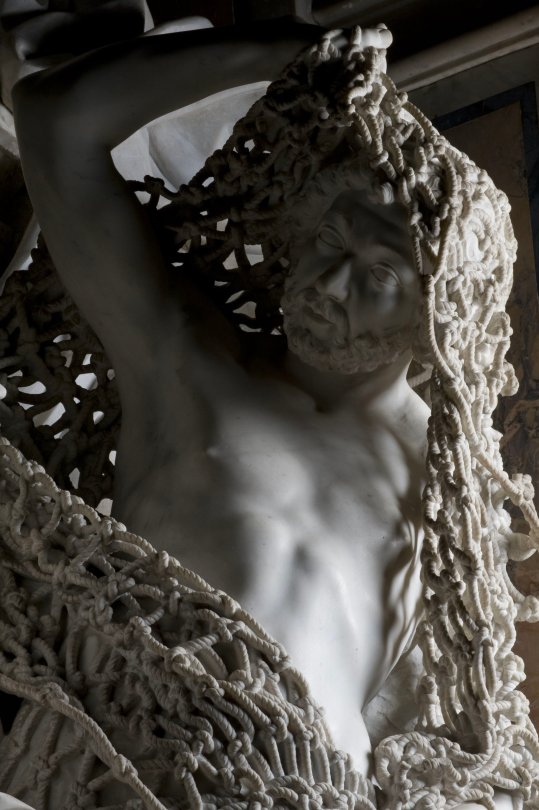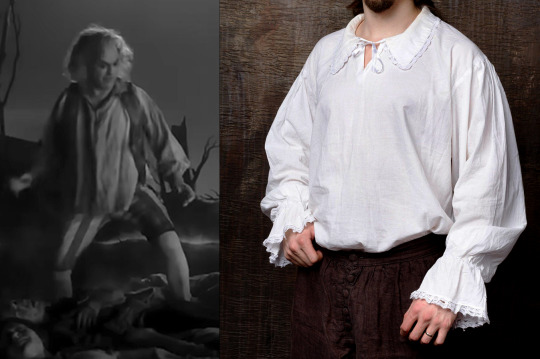#17th Century Italy
Explore tagged Tumblr posts
Text

La conversione della Maddalena (Maria Maddalena penitente)
The Conversion of the Magdalene (The Penitent Mary Magdalene)
Oil on canvas
Artemisia Gentileschi (1593 - circa 1653 or later), signed Dated circa 1616 - 1618
Palazzo Pitti collection, Italy
Please donate if you can: https://www.gofundme.com/f/help-a-family-from-gaza-to-evacuate-and-reunite
#Baroque#Baroque Art#Baroque Painting#Painting#Artemisia Gentileschi#Mary Magdalene#Catholic Art#Sacred Art#Italy#17th Century#Italian Art#17th Century Art#17th Century Italy#Italian Painting#Women Artists#Women Painters#Female Artists#Female Painters
12 notes
·
View notes
Text
Book Review: Costanza by Rachel Blackmore
The name of Bernini is one that all fans of Baroque sculpture instantly recognise. Gian Lorenzo Bernini, born in 1598 and died in 1681, is known for such works as The Rape of Proserpina (1621-22), the Ecstasy of Saint Teresa (1647-52), David (1623-24), among many others. His works are known for being highly expressive, dynamic, and passionate. Even his self-portraits convey an intensity that…
#17th Century Italy#Bernini#book reviews#Costanza Piccolomini#domestic violence#Early Modern Italy#Early Modern Women#Gian Lorenzo Bernini#Historical fiction#Italian Baroque#sculpture
0 notes
Text


Knitted Jacket
1580s-1610s
Italy
LACMA (Accession Number: AC1995.1.1)
#knitwear#fashion history#historical fashion#1580s#1590s#1600s#1610s#16th century#17th century#red#gold#silk#jacket#italy#lacma#this one and the next one have VERY similar motifs#i love it
675 notes
·
View notes
Text







"The Release from Deception,"
Carved from a single block of marble, it depicts a fisherman being released from netting by an angel, allegorical to the man being liberated from his sins.
So intricate was the work that 18th-century philosopher Giangiuseppe Origlia described it as “the last and most trying test to which sculpture in marble can aspire.”
Queirolo worked alone on his magnum opus, without an assistant or even a workshop. Even other sculptors refused to touch the delicate net in case it broke into pieces in their hands.
The masterpiece is housed at the Sansevero Chapel in Naples, with several other miracles of marble. Namely, "The Veiled Christ" (1753) by Giuseppe Sanmartino and "The Veiled Truth" (1750) by Antonio Corradini.
Francesco Queirolo (1752-1759)
Credit: @Culture_Crit
#art#history#style#sculpture#marble#hand carved#sins#net#masterpiece#italy#naple#francesco queirolo#17th century#18th century#fisherman#allegory#angel#Culture_Crit
1K notes
·
View notes
Text



Grand Gallery at Palace of Venaria by Walter Pasquali
#palace of venaria#la venaria reale#the galleria grande#italian architecture#17th century architecture#18th century architecture#baroque architecture#baroque#italy#turin#castles and palaces#historic interiors#historic palace#royal palaces#royal residence#palace#palaces#travel#travel inspiration#light academia#light academia aesthetic#classic academia#classic academia aesthetic#germany#aesthetic#academia aesthetic#academia style#academia#romantic academia#retro aesthetic
97 notes
·
View notes
Text

Marta Antonia Ghezzi Baldinotti (1649-1718) by Jacob Ferdinand Voet (c. 1639-1689)
64 notes
·
View notes
Text
Beetlejuice's Backstory and the Black Plague 💚🕷️🥀💀 PART 3

Good evening! As promised, here’s Part 3 of my series on Beetlejuice’s past and movieverse. Today, we dive deeper into historical fashion, analyzing the outfits of Beetlejuice and Delores to uncover their personal stories.
If you missed the earlier parts, check out PART 1 and PART 2.
Warning: This post contains SPOILERS for ‘Beetlejuice Beetlejuice’ (2024)... and many, MANY speculations.
Quick recap: In Part 1, we discussed the Plague. In Part 2, we delved into Beetlejuice’s past, questioning the claim that he died over 600 years ago.
I wondered: is that really true? Why does his clothing reflect the Baroque style, then?
That's right! In Part 3, I confirm my previous point: there are several clues suggesting that Beetlejuice most likely lived during the Baroque era - a cultural movement that began in Rome at the end of the 16th century and faded around 1750. Here is the list of the clues I noticed:
The lace neckband around BJ's neck.
His three-piece wedding suit.
Delores off-the-shoulder neckline and puffed sleeves.
The bird masks used by Delores and the undertakers.
AliveBeetlejuice first outfit (when he's stealing from corpses): specifically, the pirate shirt and the type of shoes.
Keep in mind that most of these elements were revolutionary novelties of the 16th-17th century. Here is proof for every. single. one of them.
The Lace Cravat

A behind the scenes still of Michael Keaton in 'Beetlejuice Beetlejuice' vs. the portrait of Jacob de Witte, Lord of Haamstede (Netherlands). The artwork was made by Jan Mijtens in 1660.
The first cravat, the predecessor of modern neckties and bow ties, originated in France during Louis XIV’s reign as a political and fashion statement. (Although the early idea comes from the Ancient Roman focale, used around 200 CE). The King was inspired by a particularly eye-catching necktie wore by Croatian mercenaries as part of their uniform. The new article of clothing quickly became a fashion staple for high-ranking men across Europe.
In its use, it represented the evolution of the common handkerchief, already popular in the 1500s as a practical tool, a flirty decoration, and a status symbol. I believe the variant Beetlejuice is wearing in the picture is called ‘jabot,’ and is one of the older, simpler versions.
Lace, often used in cravats, highlighted the wearer’s wealth. Italian lace, especially from Venice, was highly sought after by the European elite since the 15th century, when ruffs and collars were in vogue.
This detail suggests two possibilities:
Beetlejuice might have been an impoverished aristocrat (or a rich merchant) clinging to his title until the end. This could also explain the ring on his index finger, symbolizing power or family ties. Or both.

Alternatively, he may have been someone who strongly wished to be part of the elite.
Jacket and Breeches

Aristocratic fashion, 1630 (Victoria & Albert collection) vs. What Beetlejuice wore in the wedding scene.
Another standout innovation of the Baroque period was the introduction of the three-piece men’s suit, known as the ‘Habit à la française.’
This ensemble included a tailcoat (a calf-length jacket), a coat (a long waistcoat), and knee-length breeches. Like the cravat, this fashion was adopted across Europe. As you can see, Beetlejuice is perfectly embodying this fashion, which evolved and remained popular until the 19th century. Interestingly, one shoe is missing.
Pirate Shirt

Originating in the 16th-17th century, the ‘poet shirt’ or ‘poet blouse’ remained popular through the Romantic era. These multi-purpose shirts served as both underwear and nightwear, featuring long tails that reached mid-thigh or knee. The body and sleeves were gathered at the collar and cuffs, creating a full, loose fit.
Delores' Outfit

For comparison, I’ve included an illustration of noblewomen’s fashion at the court of Louis XIII (died 1643). His successor, Louis XIV, made France a cultural and fashion beacon for the next two centuries.
In the movie, Delores wears two nearly identical outfits: long dresses with puffed sleeves ending just below the elbow, a corset, and an off-the-shoulder neckline. This style aligns with 17th-century trends when fashion became more comfortable and relaxed.
The black color suits her character’s personality and role in the film, possibly hinting at a connection to the late Renaissance and the Spanish Court.


In fact, during the reign of Charles V (1500-1558) and his son Philip II (1527-1598), Spanish aristocracy particularly favored the black color, as it represented austerity and power for both men and women. Additionally, a deep shade of black was particularly difficult to achieve with the dyeing methods of the time, making those fabrics quite expensive to make.
However, The Spanish style was quite the opposite to what France later proposed: it consisted in a severe and somber luxury, which increased in opulence as the time passed. As Spain happened to be the beacon of fashion before Louis XIV came along, it's only natural that black rapidly became quite popular all around Europe as well. The color was particularly appreciated by the members of the middle class in Protestant nations and, apparently, in Italy as well.
Finally, keep in mind that 'Delores' is a variant of the more common 'Dolores'. Both names have Spanish origins and means 'sorrows'.
So what do we think? Was Beetlejuice from a rich family? Was Delores a Spanish witch?
Who knows! But I’m willing to dream and speculate!
Until the big reveal from Tim Burton himself in the now teased but not confirmed yet sequel, have a fantastic week!✨
#beetlejuice movie#tim burton#michael keaton#film theory#film analysis#film stills#cinema#film#movie#beetlejuice#betelgeuse#beetlejuice sequel#beetlejuice beetlejuice#europe#italy#beetlebabes#italian#dark#plaguecore#baroque#17th century#history#renaissance#historical fashion#delores#beetlejuice 2024#black plague#beetlejuice 2#beetlejuice & lydia
73 notes
·
View notes
Text

Studies of an Ear with an Earring, the Head of a Solidier and Two Male Heads, 17th century
Allen Memorial Art Museum - Oberlin College
61 notes
·
View notes
Text







The beauty of Villa Contarini
In Villa Contarini's Ballroom, often referred to as the Stucco Room, one can find an extraordinary display of decorative richness that challenges established perceptions of interiors by incorporating non-structural elements, such as raised putti in the seventeenth-century style.
Adorning the walls are various paintings, among them "Shipwreck with the Liberation of a Slave," painted in 1620 by the Venetian artist Carlo Saraceni upon his return from Rome.
A fresco at the ceiling's center portrays "Virtue Expelling Vice," surrounded by allegorical representations like War (Mars and Venus), Justice (sword and balance), Peace (female figure with cornucopia and olive branch), and Nobility (female figure with crowns).
Positioned in Piazzola sul Brenta, within the Padova province of the Veneto region, Villa Contarini is one of the most extraordinarily beautiful Baroque rural palaces in northern Italy.
📷: Domenico Schiavo (mimmo.schiavo - IG)
#dark academia#light academia#classical#academia aesthetic#escapism#academia#books and libraries#classic literature#books#architecture#places#travel#Villa Contarini#interior#design#ballroom#17th century#1600s#baroque#italy#historical#beautiful#royal core#cottage core#aesthetic#academic#aesthetics#mood#vibe#tumblr
51 notes
·
View notes
Text

Onofrio Palumbo e Didier Barra, S. Gennaro protegge Napoli (1652), Chiesa della SS. Trinità, Complesso Museale dei Pellegrini, Napoli.
#Onofrio Palumbo#Didier Barra#napoli#naples#art history#art#17th century#baroque#baroque art#southern italy#campania#bay of naples
41 notes
·
View notes
Text

La Maddalena che rinuncia alle vanità mondane
The Magdalene Renouncing Worldly Vanities
Oil on canvas
Attributed to the studio of Artemisia Gentileschi (1593 - circa 1653 or later) Dated 17th Century
Private collection
Please donate if you can: https://www.gofundme.com/f/help-kamlas-family-find-safety-in-egypt
#Baroque#Baroque Art#Baroque Painting#Painting#Italian School#Artemisia Gentileschi#Mary Magdalene#Catholic Art#Sacred Art#Italy#17th Century#Italian Art#17th Century Art#17th Century Italy#Italian Painting#Women Artists#Women Painters#Female Artists#Female Painters
9 notes
·
View notes
Text

Portrait of Roberto Castiglione, early 1600s Italy, Cremona, 17th century The Cleveland Museum of Art
#1600s#1500s#art#fine art#roberto castiglione#european art#classical art#europe#european#oil painting#fine arts#europa#mediterranean#southern europe#southern european#italy#italian peninsula#cremona#17th century#classic art#traditional art#male#man#portrait
48 notes
·
View notes
Text


Knitted Jacket
1630-1650
Italy
Royal Ontario Museum (Object number: 2007.28.1)
#knitwear#fashion history#historical fashion#1630s#1640s#1650s#17th century#red#yellow#silk#italy#royal ontario museum#look at those tiny ass bound buttonholes#i guess technically they're for lacing and not buttons#BUT STILL
432 notes
·
View notes
Text

Allegory of Italy, Valentin de Boulogne, 1627-28
#allegory#italy#valentin de boulogne#17th century#art history#art#aesthethic#italian art#painting#baroque
37 notes
·
View notes
Text






Taverna, Calabria, Italy
Taverna sits in an attractive position on a hill surrounded by green woods. Perched at an altitude of about 700 meters above sea level, Taverna offers visitors breathtaking panoramic views of the surrounding mountains and valleys.
Taverna is also hometown to 17th century artist Mattia Preti and the town also boasts numerous of the artist’s masterworks.
Photos by Italy Review
Follow us on Instagram, @calabria_mediterranea
#taverna#calabria#italy#italia#south italy#southern italy#mediterranean#mountains#mountainscape#italian#europe#landscape#italian landscape#landscapes#art#italian artist#mattia preti#painting#paintings#17th century#17th century painting
26 notes
·
View notes
Text

Portrait of a gentlewoman with a Moorish Servant and a dog by Salomon Adler (Danzig 1630 - Milan 1709)
58 notes
·
View notes